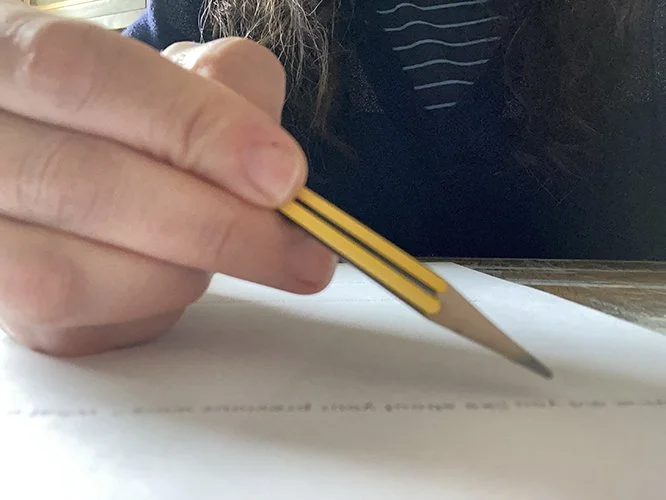Artist Statement: Get it done!
I wrote my first artist statement earlier this year. I don’t know why I put it off for so long except that it seemed like something “successful” artists with lots of collectors and exhibitions did, but not someone like me. A small fish swimming around in the shallows.
But as I was coaching a client about their artist statement and they navigated their own issues with writing one - I realised that I too had limiting beliefs about who should and shouldn’t write an artist statement.
So as soon as I finished the coaching session, I sat down and wrote my own.
And I loved every bit of the process. (Note - I do love to write so that might be part of it!)
What annoyed me most is that I wish I’d written my artist statement a lot, lot, lot sooner - like years ago - because I discovered that a well thought out and written artist statement is an incredibly powerful thing.
What is an artist statement?
Working alone for hours can lead to getting easily confused about my work. I start to question why I’m doing it, what I’m doing and where I’m trying to go. That's when my artist statement comes to the rescue.
An artist statement is a short personal written summary of what it is you are doing with your artwork. It helps provide insight into your creative practice, intentions, and inspirations. Not to be confused with your bio which is less personal, your artist statement is usually written in the first person.
Why do you need one?
I thought you only needed one to apply for funding or open calls. Now I think nothing could be further from the truth. The real reason you should do it is for yourself - not for anyone else - because it makes it easier to understand who you are as an artist - following that it helps you connect with collectors - and lastly makes it easier to apply for grants and open calls
5 ways having an artist statement helps me grow as an artist:
brings self-reflection and clarity. Writing an artist statement requires introspection and self-reflection. It prompts me to articulate my artistic goals, motivations, and vision. The process helps me gain clarity about my work, enabling me to better understand myself as an artist.
helps me articulate my artistic intent and communicate it to others. This clarity not only helps me convey my ideas to viewers, but it also helps me refine my own understanding of my work. As I clarify my intent, I can make conscious choices in my artistic practice to align with my vision.
helps me take myself seriously as a professional artist. Also helps me apply faster for open calls, grants, and collaborations as it’s already written. I usually only need to make a few tweaks and then I’m good to go. Crafting a strong artist statement enables me to communicate my artistic voice and sets me apart from other artists. It has helped me confidently speak about myself and my artwork during open studios and exhibitions.
having an artist statement has definitely helped me connect with my audience on a deeper level. Through my statement, I convey the emotional, intellectual, or conceptual aspects of my work, allowing viewers to engage with my art more meaningfully. Plus this dialogue with my audience can inspire new perspectives and ideas for artistic growth.
It also serves as a record of my artistic journey. By revisiting and updating my statement periodically, I can evaluate my progress and growth as an artist. It allows me to assess how my work has evolved, identify patterns in my practice, and set new goals for my artistic development. It becomes a reflective tool that helps me track my artistic journey and measure my growth over time.
An artist statement is not only a means of communicating my artistic vision to others but also a powerful tool for personal growth and development. It fosters self-reflection, establishes a professional identity, facilitates audience engagement, and enables self-evaluation and growth.
Here are my 5 tips to write a strong artist statement:
Be authentic: Your artist statement should reflect your unique voice, style, and artistic vision. Stay true to yourself and express what drives you as an artist.
Describe your process: Provide insight into your creative process, techniques, materials, and any specific methods you employ. Explain how your process contributes to the final artwork.
Define your purpose: Clearly state why you create art and what you hope to communicate or achieve through your work. Identify your goals, inspirations, and motivations.
Keep it concise: Aim for a clear and succinct statement that captures the essence of your work. Avoid rambling or using excessive jargon.
Seek feedback: Share your statement with trusted friends, mentors, or fellow artists for feedback. They can provide valuable insights and help you refine your message.
Remember, an artist statement is a dynamic document that can evolve over time. Regularly revisit and update it to reflect your growth and new artistic endeavours.
If you need help with your artist statement, consider booking a coaching session with me.
Happy writing!
